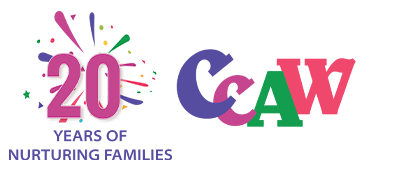Child and Adolescent Psychiatric Services
- Home
- Child and Adolescent Psychiatric Services
1. Child and Adolescent Psychiatric Assessment:
A psychiatric assessment is the process of gathering information about a person within a psychiatric service. It is usually the first stage of a treatment process. A psychiatric assessment is most commonly carried out for clinical and therapeutic purposes, to establish a diagnosis and formulation of the individual’s problems, and to plan their care and treatment.
It includes the following-
- Psychiatric interview- detailed case history, detailed physical examination, Mental Status Examination (MSE) and evaluation of psychopathology
- Diagnosis
- Plan of management
Pharmacotherapy, as the name suggests, involves the use of psychotropic medication (e.g. antidepressants or antipsychotics) to treat mental health symptoms and disorders. Just as those with physical health issues, such as type I diabetes or asthma, usually have medication to keep their bodies functioning well, many individuals with mental health issues need medication to help their brains function normally.
Psychotropic medications majorly fit into the following five categories:
- Antidepressants
- Antipsychotics
- Anti-anxiety medications (anxiolytics)
- Mood stabilizers
- Stimulants
Biomedical intervention addresses common biological issues in children- such as gut problems, immune dysregulation, detoxification difficulties, and nutritional deficiencies. These can impact behavior, communication, sleep, and learning. The approach aims to support overall development by healing the body from within.
Key Elements of Biomedical Treatment:
- Diet Plan
(e.g., GFCF diet, Low Oxalate Diet, Feingold diet)
Helps reduce inflammation, support digestion, and minimize behavioral triggers. - Nutraceuticals
(Vitamins, minerals, amino acids, antioxidants)
Corrects deficiencies and supports brain and body function. - MB12 Injections
Supports methylation and detox pathways—can improve speech, focus, and awareness. - Chelation Therapy
Helps remove heavy metals (like mercury and lead) that may affect brain development. - Hyperbaric Oxygen Therapy (HBOT)
Increases oxygen delivery to the brain, reducing inflammation and promoting healing.
These interventions are individualized based on the child's clinical needs and lab findings, and are used alongside therapies for best results.
To learn more about our biomedical services and how they support autism treatment, please visit: www.biomedautism.com
2. Pharmacotherapy:
Pharmacotherapy, as the name suggests, involves the use of psychotropic medication (e.g. antidepressants or antipsychotics) to treat mental health symptoms and disorders. Just as those with physical health issues, such as type I diabetes or asthma, usually have medication to keep their bodies functioning well, many individuals with mental health issues need medication to help their brains function normally.
Psychotropic medications majorly fit into the following five categories:
- Antidepressants
- Antipsychotics
- Anti-anxiety medications (anxiolytics)
- Mood stabilizers
- Stimulants
He is constantly eating, and craving for tasty food
3. Biomedical Intervention:
It refers to a group of interventions which are designed to stop, or at least reduce, the effect of biomedical problems (such as gastrointestinal abnormalities, immune dysfunctions, detoxification abnormalities, and/or nutritional deficiencies or imbalances).
a) Hyperbaric oxygen therpy (HBOT):
Hyperbaric oxygen therapy (HBOT) is a safe and effective way to get more oxygen into the body at cellular level by using pressurized air chambers. Under these conditions, your lungs can gather more oxygen than would be possible breathing pure oxygen at normal air pressure.
Research studies have demonstrated that in individuals with autism, decreased blood flow through an organ to several areas of the brain correlates with many of the clinical symptoms of autism including repetitive, self-stimulatory and stereotypical behaviours, impairments in communication, sensory perception, and social interaction.
Research indicates that HBOT has improved the following symptoms in children with autism:
- enhancement in sensory perception
- social interaction
- language
- repetitive behaviours.
- lethargy and motivation.
Duration of treatment: The initial session will consist of 60 -90 minutes treatments, preferably once a day. In special cases when the child comes from out of town, they can be treated twice a day with a minimum of 4 hours gap. It is most effective when recommendation treatment is done as close together as possible.
b) Special Diets:
- GFCFSF- It is an acronym for Gluten-free, Casein-free, Soy-free Diet. It has proven to be beneficial for children with Autism Spectrum Disorder (ASD).
- Fein gold diet- It is designed to help kids with symptoms of ADHD, dyslexia and other learning disabilities. It involves avoiding certain foods that might make the symptoms worse such as artificial food colouring, sweetener, preservatives etc. which can help improve focus and behaviour.
c) Nutritional Supplements:
They are dietary supplements that are intended to provide nutrients that may otherwise not be consumed in sufficient quantities. It can include nutritional supplements like omega, vitamins, minerals, calcium and amino acid.
d) Chelation Therapy:
Chelation therapy is a medical procedure where an agent is given to remove heavy metals and minerals from the body such as lead, mercury, copper, iron, arsenic, aluminium and calcium minerals such as lead, mercury, copper, iron, arsenic, aluminium, and calcium.



